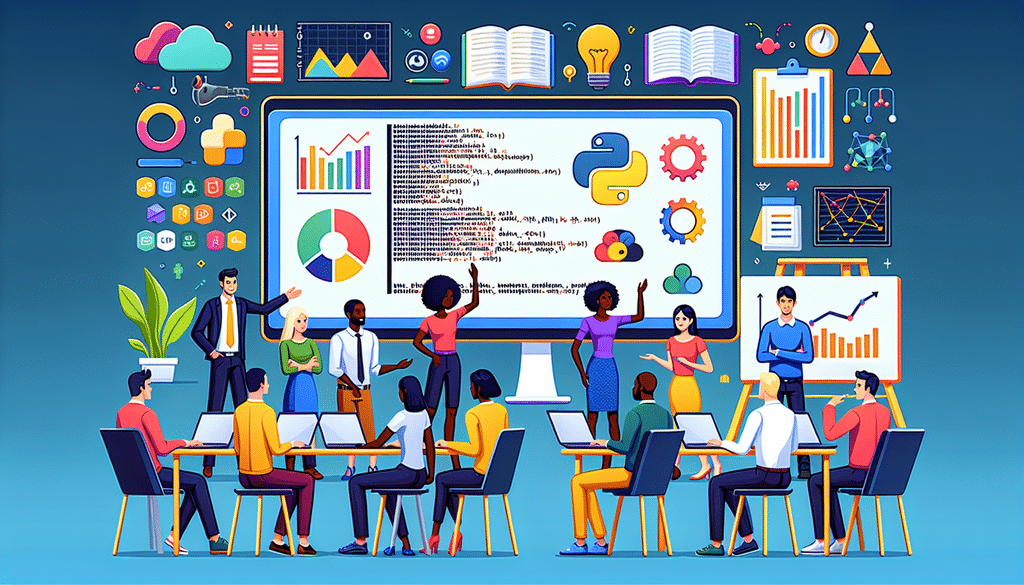Python has become a powerful tool for data analysis and has emerged as a favorite among data analysts around the world. Its simplicity, versatility, and the vast ecosystem of libraries have established it as a leading programming language in data science. Whether you are just starting your journey in data analysis or looking to refine your skills, understanding and utilizing the right Python libraries is crucial. In this article, we will explore the essential Python libraries every data analyst must learn.
Why Choose Python for Data Analysis?
Before diving into the essential libraries, it’s important to understand why Python is preferred over other programming languages for data analysis. Some of the reasons include:
- Ease of Learning: Python’s syntax is simple and intuitive, making it a great choice for beginners.
- Extensive Libraries: Python boasts a rich set of libraries designed specifically for data analysis, manipulation, and visualization.
- Community Support: A large and active community means an abundance of resources, tutorials, and forums to resolve issues.
- Integration: Python works seamlessly with other technologies and languages, making it flexible for various data tasks.
Key Python Libraries for Data Analysis
Now, let’s examine the most essential libraries that will empower your data analysis process.
Pandas
Pandas is the go-to library for data manipulation and analysis. It provides advanced data structures like Series and DataFrames that allow for efficient data handling.
- DataFrames: Two-dimensional labeled data structures with columns of potentially different types.
- Data Cleansing: Tools for removing or filling missing values, filtering data, and transforming rows.
- Data Aggregation: Functions to group data and perform operations like sum, mean, and count.
Pandas serves as the backbone for most data analysis tasks, making it an indispensable tool.
Numpy
Numpy, short for Numerical Python, is the foundational package for numerical computing in Python. It provides support for arrays and matrices, making mathematical operations efficient.
- Array Operations: Numpy’s array objects allow for fast and flexible manipulation of numerical data.
- Mathematical Functions: A variety of mathematical functions are available for operations on arrays.
- Linear Algebra: Numpy includes tools for linear algebra, Fourier transforms, and random number generation.
Numpy is particularly useful when working with large datasets and performing computations quickly.
Matplotlib
Data visualization is a critical component of data analysis, and Matplotlib is the library that makes it easy to create static, animated, and interactive visualizations.
- Flexible Plots: Generate a wide variety of plots, including line graphs, scatter plots, histograms, and more.
- Customization: High level of customization to adjust colors, labels, and scales according to your preferences.
- Integration with Pandas: Easy to plot data directly from Pandas DataFrames.
Whether you are presenting data to stakeholders or visualizing your findings, Matplotlib is an important tool.
Seaborn
Built on top of Matplotlib, Seaborn further simplifies the creation of informative and attractive statistical graphics.
- Statistical Graphics: Easily create complex visualizations like heatmaps, violin plots, and box plots.
- Enhanced Aesthetics: Default themes and color palettes make your plots visually appealing.
- Data Relationships: Simplifies the process of exploring relationships between variables through visualization.
Seaborn is ideal for anyone looking to enhance their data storytelling through visualization.
Scikit-Learn
For those venturing into machine learning, Scikit-Learn is a must-have library. It provides simple and efficient tools for data mining and data analysis.
- Machine Learning Algorithms: Access to a wide array of algorithms including classification, regression, and clustering.
- Data Preprocessing: Tools for scaling, normalizing, and transforming data.
- Model Evaluation: Various metrics and validation techniques to evaluate models effectively.
Scikit-Learn empowers data analysts to implement machine learning solutions with ease.
Statsmodels
If you require statistical modeling, Statsmodels is the library to turn to. It provides classes and functions for estimating and testing statistical models.
- Linear Regression: Conduct linear regression analysis with comprehensive statistics.
- Statistical Tests: Functions for t-tests, ANOVA, and hypothesis testing.
- Time Series Analysis: Tools for handling time-series analysis including ARIMA modeling.
Statsmodels is invaluable for data analysts focused on making data-driven decisions based on statistical results.
Conclusion
As a data analyst, mastering these essential Python libraries can dramatically enhance your capabilities and efficiency. From data manipulation with Pandas and Numpy to visualizations with Matplotlib and Seaborn, and machine learning with Scikit-Learn, these tools provide you with a robust set of options to analyze and interpret data effectively.
Investing time in learning these libraries can open doors to advanced data analysis and scientific computing, making you a more proficient analyst in today’s data-centric world. Whether you are working on personal projects or collaborating in a team, these libraries will empower you to extract valuable insights and make data-driven decisions.
Stay curious, keep practicing, and embrace the power of Python in your data analysis journey!





